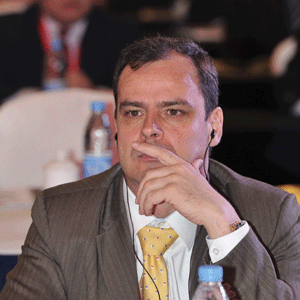THANK YOU FOR SUBSCRIBING

The nucleus of customer-driven transformations
MazenKassis, Head of Data & Analytics, Foodstuffs North Island


MazenKassis, Head of Data & Analytics, Foodstuffs North Island
Working in the FMCG/CPG industry for the first time, I’ve come to appreciate that, to get grocery items from a farm or a manufacturing plant to a store shelf and, ultimately, to a customer, is no easy feat. It involves thousands of employees making tens of thousands of decisions every day and a complex, technical infrastructure to support it. Like many organisations, particularly larger ones, a significant technical infrastructure is needed to power it. This infrastructure would not have been built overnight but be the product of years of effort, resulting in a complex ecosystem of technologies and associated business processes. Underpinning all this complexity is data, increasingly in abundance, being collected in more and more ways, every day.
Collecting data is one thing, but how the data is used is of critical importance. As a prime example, many people contend their organisations are on journeys to become “customer-driven”, but what does this mean and how does data and its accompanying infrastructure play a role in supporting such endeavours?Becoming “customer-driven” can mean many things to many people. I’m of the view that to be customer-driven is to ensure that all business decisions place customers at the centre. In other words, before making a decision anywhere in the business, the impact of the decision on customers, either directly or indirectly, should be in firm focus. These days, “the cloud” increasingly seems to be central to many of these transformations, and this is true at Foodstuffs North Island, too. We call the technical foundation for the mammoth transformational journey we’re on the Enterprise Data Platform or EDP. The EDP is not one thing, not a single piece of technology, but rather an ecosystem of technologies, some already in existence and some needing to be introduced, that must come together in the service of enabling people across the organisation to access the breadth and depth of datarequired to make better decisions.
To use the data, people must first be aware it exists, be able to understand what it means, know how to use it and trust that its accurate, before they are able to turn it into insights and then actions
Like any journey, milestones help assess progress made. Defining these milestones, particularly the cultural ones,presents challenges. Broadly, success at each step in the journey can be measured by asking two main questions: how much an initiative will move the dial on “self-service” and how much will it move the dial on “governance”; the more positive movement in each case, the better and more impactful the initiative is likely to be.
Fundamentally, enabling people with the responsibility for making decisions – those closest to the action – to undergird their decisions with data, when they need it and howthey need it, is arguably one of the quickest and most efficient ways to positively impact customers. This likely entails a transitioning away from centralised data and analytics teams “doing the doing” to a hub and spoke model, where a centralised data and analytics team exists primarily as a strategic centre of excellence, serving to empower domain-specific data people (e.g., business analysts in a supply chain or merchandising function) across the business through the creation of guidelines, protocols and training such that people in the broader team have access to the data they need, when they need it, as well as the knowledge to use that data for good - full flexibility within these frameworks.
People who find a way in their organisations to combine a strategy to adequately address cultural aspects and the right technical components, aimed at bringing stakeholders at every level along the journey, stand the best chance of success and of reaping the benefits of establishing such an environment for years to come.
What have been some of our learnings?
● Ensure the cultural aspects are integrated into the design of the overall technological roadmap.
● Develop this roadmap with key stakeholders from the business, rather than for them or to them.
● Have an initial high-level design that encapsulates the functionality you’re looking to enable in your organisation, but focus on bringing this functionality to life iteratively, through valuable use-cases. Don’t try to boil the ocean by doing everything at once.
● When storytelling to win over stakeholders, simplicity in message trumps completeness.
● Prepare yourself to repeat this story and the underlying messages ad nauseam – it’ll likely need several repetitions before it sticks in people’s minds.
● Sponsorship, promotion and/or involvement from senior stakeholders helps boost image and profile of efforts.
Weekly Brief
I agree We use cookies on this website to enhance your user experience. By clicking any link on this page you are giving your consent for us to set cookies. More info
Read Also












